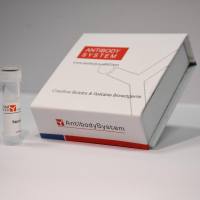In Vivo Cryotechniques for Preparation of Animal Tissues for Immunoelectron Microscopy
互联网
421
The final goal of immunohistochemical studies is that all findings examined in animal experiments should reflect the physiologically functional background. Therefore, the preservation of original components in cells and tissues is necessary for describing the functional morphology of living animal organs. It is generally accepted that morphological findings of various organs are easily modified during the conventional preparation steps. The quick-freezing method, by which resected tissues are quickly frozen, reduces morphological artifacts resulting in significant findings of native cells and tissues. However, tissues have to first be resected from living animal organs for quick-freezing. We have developed an “in vivo cryotechnique” for immunohistochemistry of some components in living animal organs. All physiological processes are immediately immobilized in the ice crystals by the “in vivo cryotechnique,” and every components of the cells and tissues are maintained in situ at the time of freezing. Thus, ischemic or anoxic effects are minimized on immunohistochemical localization of the components. Another new “cryobiopsy” technique will be useful for capturing time-dependent morphological changes in the same animal including humans and for maintaining intracellular components.








